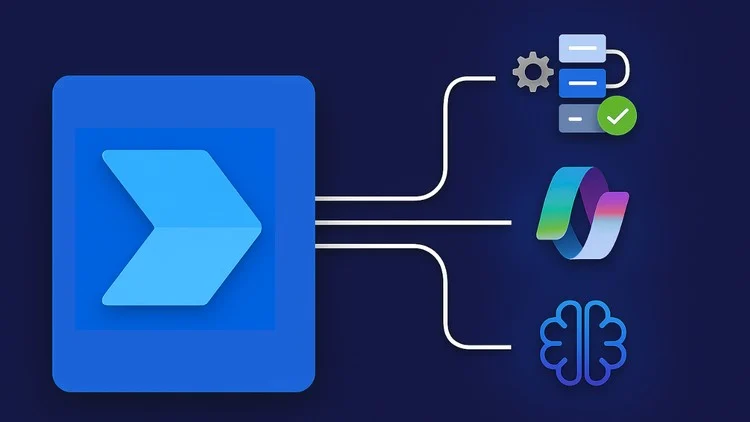
In today’s fast-paced business environment, staying ahead of the competition requires innovative approaches and tools. One such innovation is vibe coding, a concept gaining traction in the realm of project management.
But what is vibe coding, and how can it be effectively integrated into product management?
Let’s dive in to explore the potential benefits and strategies for leveraging vibe coding in your projects.
Understanding Vibe Coding
Vibe coding is a relatively new concept that refers to the process of capturing and interpreting the “vibe” or mood of a project or team. It involves analyzing various qualitative and quantitative data points to assess the overall sentiment and emotional state of a team. By understanding these vibes, project managers can make informed decisions that enhance team performance and project outcomes.
The Science Behind Vibe Coding
Vibe coding relies on a mix of psychological and technological tools. It utilizes sentiment analysis, a method that interprets emotions from text, speech, and other media, to gauge the mood of a team. Additionally, it draws on behavioral psychology to understand how team dynamics can impact productivity and motivation.
Sentiment Analysis Tools
Sentiment analysis tools use algorithms to process data from emails, chat messages, and other communications. These tools can detect keywords and phrases that indicate emotional states such as frustration, excitement, or calmness. By processing this data, managers can get real-time insights into the team’s emotional landscape.
Behavioral Psychology
Integration Behavioral psychology provides a framework for understanding how individual behaviors and team dynamics affect overall performance. By applying principles such as reinforcement and cognitive behavior theory, vibe coding helps in identifying patterns that may need intervention to maintain harmony and productivity.
Data Sources for Vibe Coding
The data sources for vibe coding can be diverse, ranging from digital communications to face-to-face interactions. Surveys, feedback forms, and even social media interactions can provide valuable insights. The key is to blend these sources to create a holistic view of the team’s emotional state.
Why Vibe Coding Matters in Product Management For product managers
Understanding team dynamics is crucial. Projects often require cross-functional collaboration, and knowing the emotional pulse of the team can lead to better decision-making, improved communication, and more successful project outcomes. Vibe coding offers a structured approach to achieving this understanding.
Enhancing Cross-Functional Collaboration
Cross-functional teams bring together diverse skills and perspectives, which can sometimes lead to conflicts. Vibe coding helps in identifying friction points early on, allowing managers to address them before they affect collaboration. By fostering an environment of open communication, teams can work more synergistically.
Decision-Making Informed by Emotional Insights
Traditional decision-making processes often overlook the emotional aspects of team dynamics. Vibe coding provides product managers with insights into the emotional states of team members, enabling them to make decisions that are more aligned with the team’s current capabilities and morale.
Communication Improvement Strategies
Effective communication is the backbone of successful project management. By understanding the team’s vibe, managers can tailor their communication strategies to be more empathetic and effective, ensuring that messages are not only heard but also understood and acted upon.
Implementing Vibe Coding in Product Management Integrating vibe coding into product management requires a strategic approach. Here are some steps to effectively harness this tool:
Step 1: Gather Data
The first step in vibe coding is data collection. This can be achieved through various means such as surveys, team meetings, and digital communication tools. Look for patterns in communication frequency, language used, and feedback from team members to get a comprehensive view of the team’s vibe.
Surveys and Feedback Forms Surveys are a direct way to gather data on team sentiment. They can be structured to include questions about team dynamics, workload satisfaction, and personal well-being. Feedback forms provide a channel for team members to express concerns anonymously, ensuring honest input.
Analyzing Digital Communications
Analyzing digital communications involves looking at emails, chat logs, and other electronic messages. This analysis can reveal the tone and mood of the team, highlighting areas that may require attention. Regularly reviewing these communications helps in maintaining an up-to-date understanding of team sentiment.
Observing Team Interactions Face-to-face meetings and virtual team interactions offer valuable insights into team dynamics. Observing these interactions can reveal non-verbal cues and group behaviors that are not captured in digital communications, providing a more nuanced understanding of the team’s vibe.
Step 2: Analyze Sentiments
Once data is collected, the next step is to analyze it using sentiment analysis tools. These tools can help identify the prevailing emotions within the team, such as stress, enthusiasm, or apathy. Understanding these sentiments allows product managers to address issues before they escalate.
Utilizing Advanced Sentiment Analysis Software Advanced software tools can process large volumes of data quickly, identifying trends and patterns in team sentiment. These tools often include dashboards that visualize data, making it easier for managers to interpret and act upon the insights gained.
Identifying Key Emotional Indicators Key emotional indicators might include levels of engagement, stress, or satisfaction. By focusing on these indicators, managers can pinpoint specific areas that need attention. Regular monitoring of these indicators helps in maintaining a stable and positive team environment.
Addressing Early Warning Signs Identifying early warning signs of dissatisfaction or burnout is critical. By addressing these issues proactively, managers can prevent them from developing into larger problems. This proactive approach can lead to improved team morale and project success.
Step 3: Foster Open Communication
Vibe coding is not just about identifying problems; it’s also about fostering a culture of open communication. Encourage team members to share their thoughts and feelings openly. This transparency can help in resolving conflicts and enhancing team cohesion.
Creating a Safe Environment for Dialogue Creating an environment where team members feel safe to express their thoughts is crucial. This involves building trust and ensuring that all opinions are respected and valued. Regular team meetings and one-on-one check-ins can facilitate this open dialogue.
Encouraging Feedback and Suggestions Encourage team members to provide feedback on processes and projects. This can lead to valuable insights and innovative solutions. By actively seeking suggestions, managers demonstrate that they value the team’s input, fostering a more inclusive and collaborative atmosphere.
Implementing Feedback Mechanisms Establishing formal mechanisms for feedback can streamline the process of capturing and addressing team concerns. These mechanisms might include regular surveys, suggestion boxes, or dedicated feedback sessions. The key is to ensure that feedback is acted upon, showing the team that their voices are heard.
Step 4: Implement Changes
Based on the insights gained from vibe coding, product managers can implement changes to improve team morale and productivity. This might include altering workflows, adjusting project timelines, or providing additional support and resources to the team.
Tailoring Workflows to Team Needs Every team has unique strengths and challenges. By tailoring workflows to better fit the team’s needs, managers can enhance efficiency and morale. This might involve redistributing tasks to align with individual strengths or simplifying processes to reduce stress.
Adjusting Project Timelines Project timelines should be flexible enough to accommodate the team’s well-being. Adjusting deadlines, when necessary, can prevent burnout and maintain productivity. It’s important to balance the demands of the project with the health and happiness of the team.
Providing Support and Resources Additional resources, such as training, tools, or personnel, can help alleviate pressure on the team. Providing this support demonstrates a commitment to the team’s success and can significantly boost morale and productivity.
Benefits of Vibe Coding
The integration of vibe coding into product management can yield several benefits:
Improved Team Morale By understanding and addressing the emotional needs of the team, product managers can create a more positive and motivated work environment. This can lead to increased job satisfaction and reduced turnover rates.
Boosting Job Satisfaction When team members feel understood and valued, their job satisfaction increases. Vibe coding helps managers identify and address factors that contribute to dissatisfaction, creating a more enjoyable and fulfilling work environment.
Reducing Turnover Rates High turnover rates can be costly and disruptive. By proactively addressing the emotional needs of the team, managers can reduce turnover, retaining valuable talent and maintaining continuity in projects.
Building a Positive Workplace Culture A positive workplace culture attracts and retains top talent. Vibe coding helps in cultivating a culture where team members feel supported and empowered, enhancing overall satisfaction and productivity.
Enhanced Productivity A happy team is a productive team. Vibe coding helps identify and mitigate issues that may be hindering productivity, allowing teams to work more efficiently and effectively.
Identifying Productivity Barriers Vibe coding can reveal barriers to productivity such as unclear goals, lack of resources, or interpersonal conflicts. By addressing these barriers, managers can enable the team to focus on their work and achieve their best results.
Streamlining Processes for Efficiency Streamlined processes reduce unnecessary complexity and stress. Vibe coding insights can guide process improvements, making work more manageable and efficient for the team.
Encouraging a Focused Work Environment A focused work environment minimizes distractions and maximizes output. By understanding team dynamics, managers can create conditions that support concentration and high performance.
Better Decision-Making With a clearer understanding of team dynamics, product managers can make more informed decisions that align with the team’s strengths and address its weaknesses.
Aligning Decisions with Team Strengths Understanding the strengths and weaknesses of the team allows managers to make decisions that leverage these strengths, leading to more successful project outcomes. This alignment ensures that tasks are assigned to those best equipped to handle them.
Addressing Team Weaknesses Addressing weaknesses is crucial for team growth. Vibe coding helps in identifying areas for improvement, allowing managers to provide targeted support and development opportunities.
Making Data-Driven Decisions Informed by the insights from vibe coding, managers can make decisions based on data rather than assumptions. This data-driven approach enhances the likelihood of successful project outcomes.
Proactive Problem-Solving Vibe coding enables product managers to identify potential problems early on, allowing for proactive problem-solving rather than reactive crisis management.
Anticipating and Mitigating Risks By identifying potential issues early, managers can mitigate risks before they escalate. This proactive risk management approach helps in maintaining project stability and success.
Resolving Conflicts Before They Escalate Conflicts can disrupt team harmony and productivity. Vibe coding helps in identifying tensions early, allowing managers to resolve conflicts before they impact the project negatively.
Ensuring Continuous Improvement Continuous improvement is key to long-term success. By regularly assessing team sentiment, managers can implement ongoing improvements, ensuring that the team evolves and adapts to changing needs and challenges.
Challenges and Considerations
While vibe coding offers significant benefits, it also presents some challenges:
- Data Privacy Concerns Handling sensitive team data requires careful attention to privacy and ethical considerations. It’s important to ensure that all data collection and analysis complies with relevant regulations and respects team members’ privacy.
- Ensuring Compliance with Regulations Compliance with data protection regulations is critical. Managers must ensure that all data collection processes comply with laws such as GDPR or CCPA, protecting team members’ privacy and rights.
- Maintaining Data Anonymity Anonymity can encourage more honest feedback. By anonymizing data, managers can ensure that team members feel safe to express their true sentiments without fear of repercussions.
- Ethical Considerations in Data Handling Ethical data handling involves using data responsibly and transparently. Managers should communicate clearly about how data will be used and ensure that it is only applied for the intended purposes.
- Interpretation of Data Interpreting the results of vibe coding requires a nuanced understanding of team dynamics and emotional intelligence. Product managers must be able to distinguish between short-term fluctuations and long-term trends.
- Developing Emotional Intelligence Emotional intelligence is key to interpreting vibe coding data effectively. Managers should work on developing their own emotional intelligence to better understand and respond to team dynamics.
- Distinguishing Between Fluctuations and Trends Not all changes in team sentiment indicate long-term issues. Managers need to distinguish between temporary fluctuations and significant trends to avoid overreacting to short-term changes.
- Training in Data Interpretation Training can enhance a manager’s ability to interpret vibe coding data accurately. This training might include workshops or courses on data analysis and emotional intelligence, equipping managers with the skills needed for effective vibe coding implementation.
- Balancing Objectivity and Subjectivity While vibe coding relies on data, interpreting emotions and moods involves a degree of subjectivity. Product managers need to balance objective data with their own intuition and understanding of the team.
- Integrating Intuition with Data Intuition plays a role in understanding team dynamics. Managers should not rely solely on data but also consider their own observations and experiences when interpreting vibe coding insights.
- Avoiding Bias in Interpretation Bias can skew data interpretation. Managers should be aware of their own biases and work to minimize their impact, ensuring that decisions are based on accurate and objective assessments.
- Encouraging Diverse Perspectives Diverse perspectives can enhance the interpretation of vibe coding data. By involving multiple team members in the interpretation process, managers can ensure a more balanced and comprehensive understanding of team dynamics.
Conclusion
Vibe coding is a powerful tool for product managers seeking to enhance team dynamics and project outcomes. By capturing and analyzing the emotional pulse of a team, product managers can make informed decisions that improve morale, productivity, and overall success.
As with any tool, the effectiveness of vibe coding depends on how it is implemented. By following best practices and remaining mindful of potential challenges, product managers can harness the power of vibe coding to drive their projects forward.
Embrace vibe coding as part of your product management strategy, and watch your team and projects thrive.





